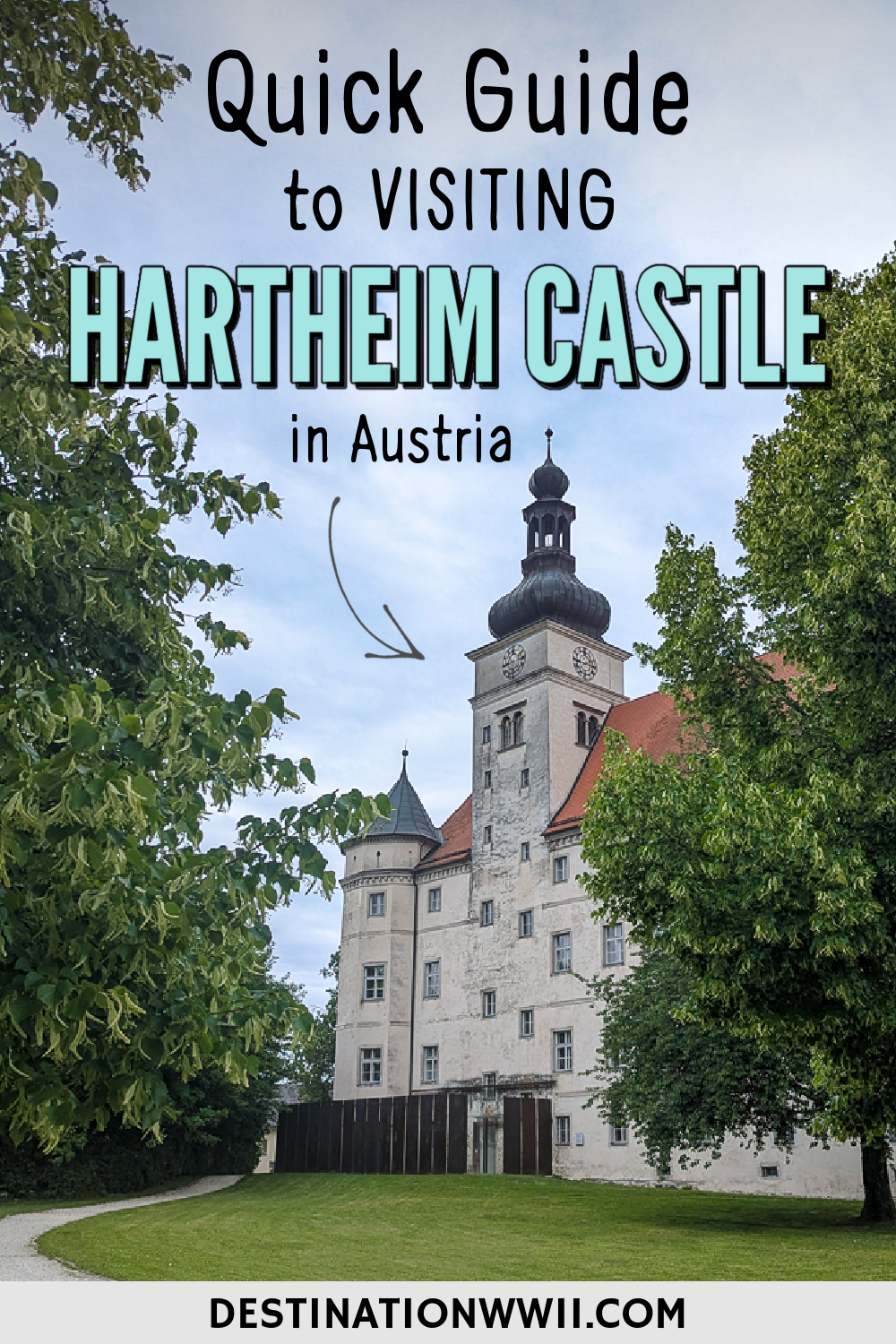There aren’t as many WWII sites in Austria as there are in places like Germany or Poland, but the ones that are here are especially barbaric; the Nazi killing center at Hartheim Castle being a prime example.
This guide will tell you everything you need to know for visiting Hartheim Castle–the notorious Nazi killing center for those deemed “unworthy of life.”
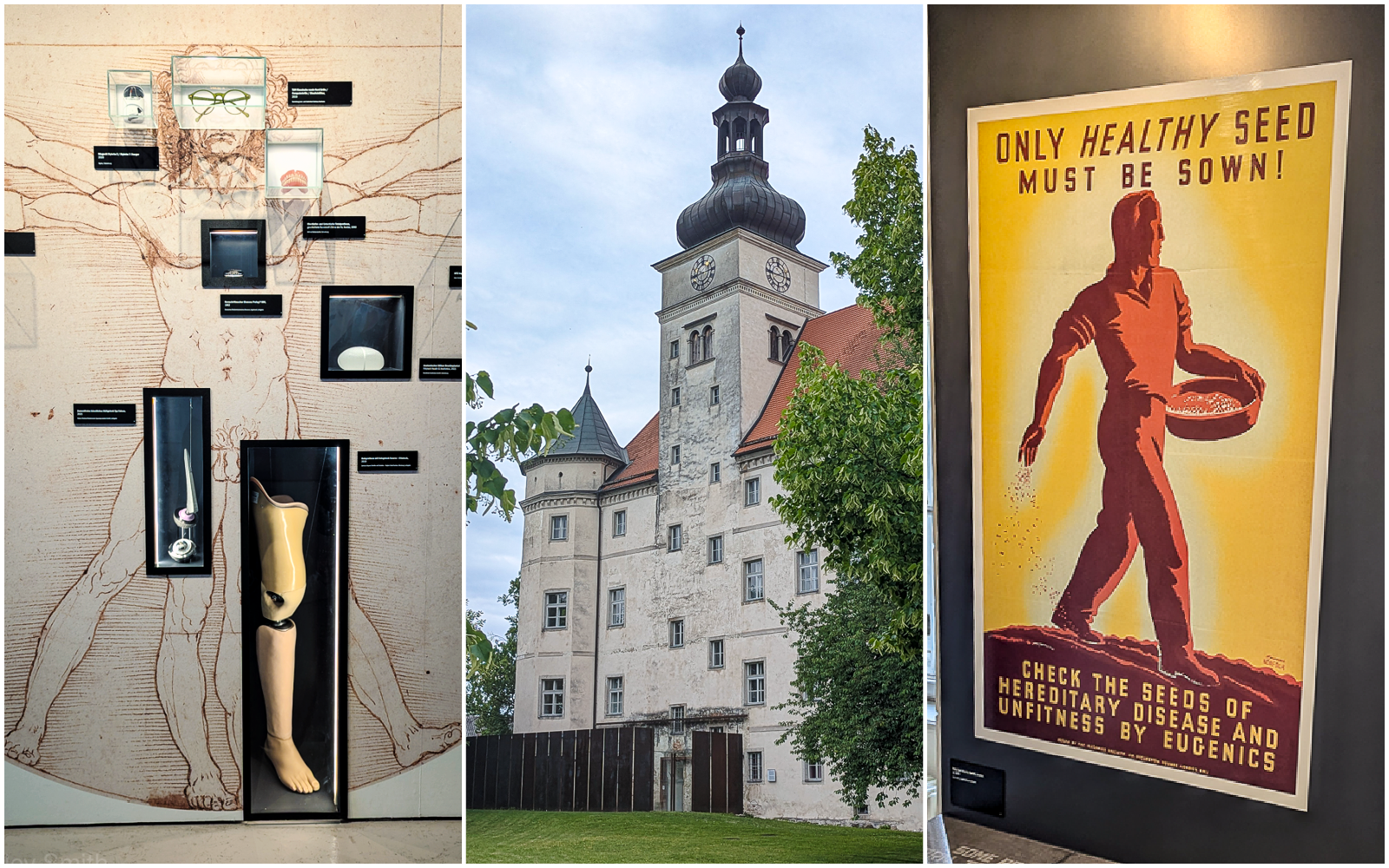
What is Hartheim Castle?
Hartheim Castle was one of six Nazi killing centers associated with the Aktion T4 “euthanasia” program. Between 1940-1944, the Nazi regime murdered around 30,000 people at this location, all of whom it considered “unworthy of life.”
Before this, Hartheim Castle was simply a residential castle that originally belonged to the Hartheim family who lived here in the 12th century. The building was consistently expanded upon and came to look as it does now sometime in the 1600s.
In the late 1800s, the castle’s owners donated it to a Catholic organization dedicated to serving the poor, sick, and marginalized. As such, the castle became a place where those with disabilities were cared for and shown mercy. When the Nazi regime confiscated the property in 1938, they perverted its purpose as well.
In German, Hartheim Castle is known as Schloss Hartheim. (I use the terms interchangeably.)
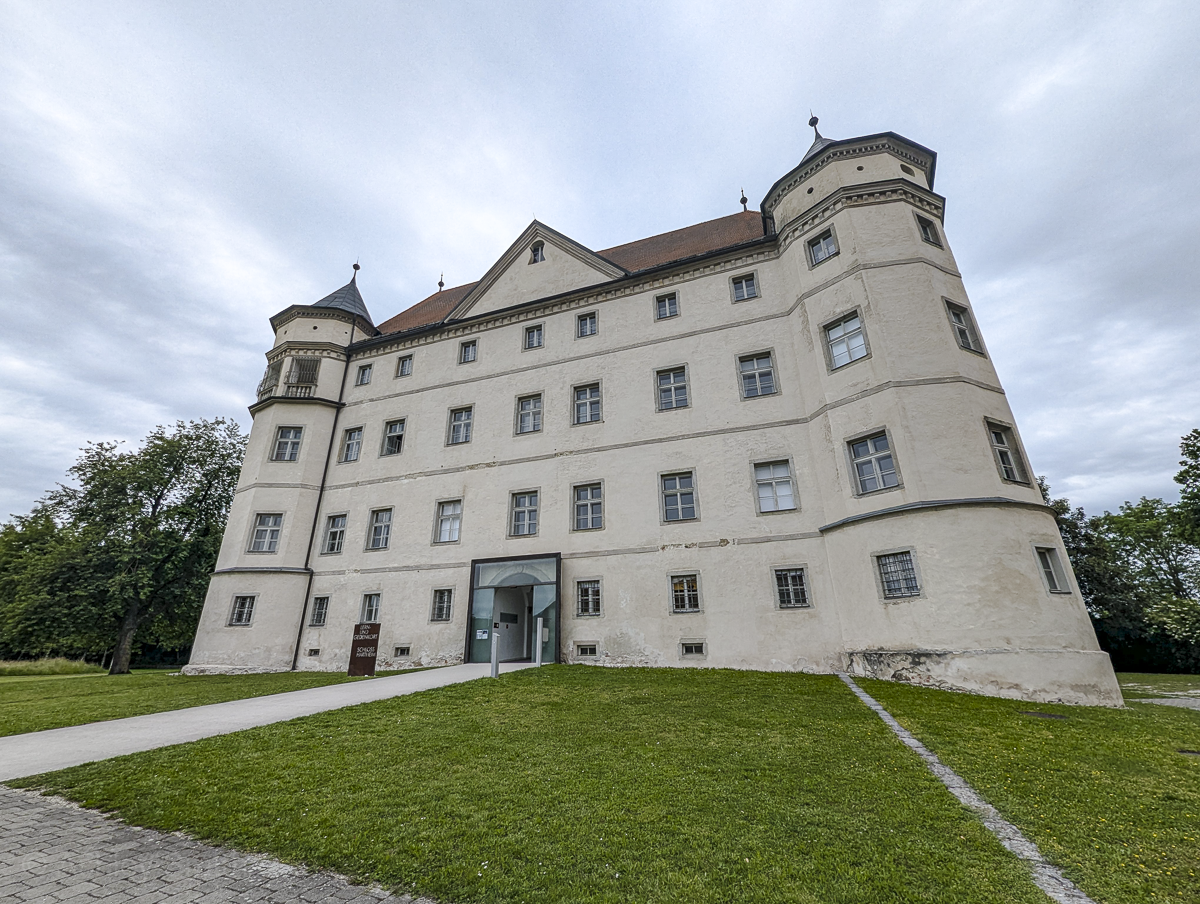
Aktion T4 program
In early 1939, the Nazi regime initiated a program of extermination that specifically targeted those with physical and/or mental disabilities. Though the idea of “cleansing” the “Aryan” race through “euthanasia” dates back to well before the start of World War II, it wasn’t until then that the program became official Hitler-sponsored decree. This program was called Aktion T4.
Aktion T4 victims
The program started with children–systematically murdering those who showed early signs of disability–and quickly evolved to include individuals of all ages with physical and/or mental disabilities as well as anyone living in mental health facilities or nursing homes, the elderly, the chronically ill, and anyone else the regime considered a financial burden.
Simply put, if you lacked the ability to work, they considered you a “useless eater.” If you couldn’t contribute to the expansion of the Reich, you didn’t deserve to live.
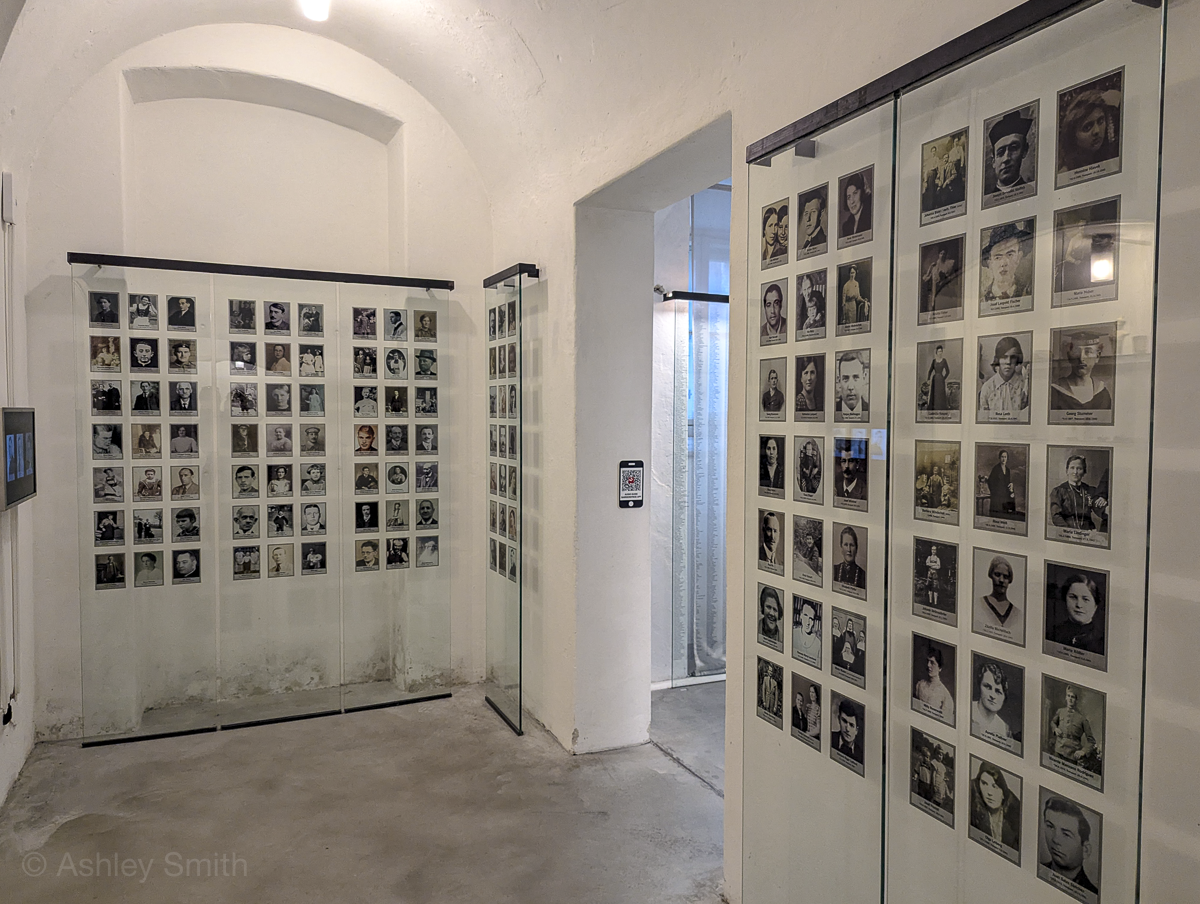
As the war went on, this eventually expanded to include Jews, political opponents, career criminals, and pretty much anyone the Nazis considered “undesirable.” A large number of victims included concentration camp prisoners from places like Gusen, Dachau, Mauthausen, and women from the Ravensbrück concentration camp they claimed were “mentally ill.” (Anyone else getting Salem Witch Trials flashbacks?)
The Aktion T4 program was so much more involved and heinous than I’m able to summarize here. I beg you, please read more about it if you’re unable to visit Hartheim. Check out the list of materials at the bottom of this post, or at least read this article from the USHMM.
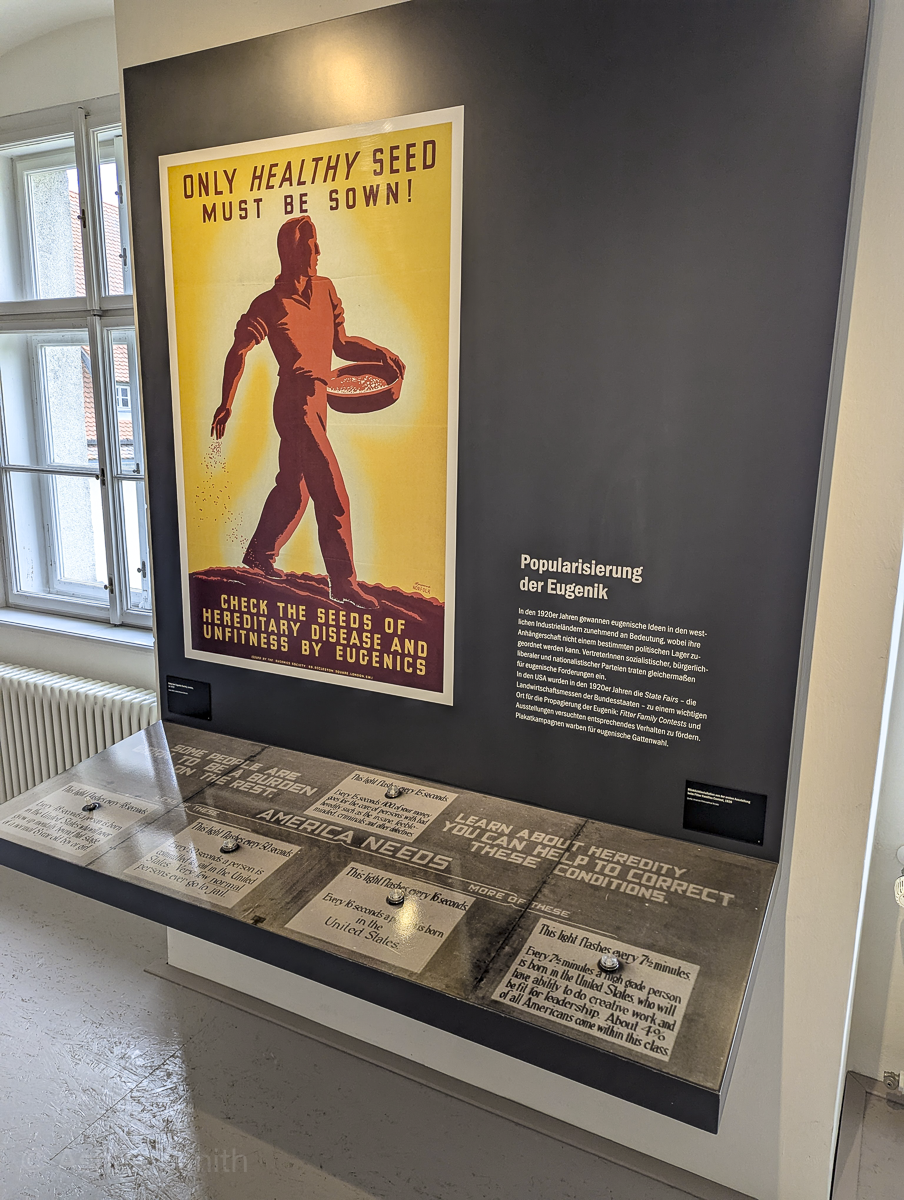
Hartheim as an extermination center
Though Nazi doctors originally committed these murders via lethal injection, they promptly installed a carbon monoxide gas chamber (disguised as a shower) and two crematoriums at Hartheim which did most of the work going forward. The victims arrived here and were executed almost immediately. After all, this was a killing center, not a prison camp.
The Nazi regime kept the T4 program and Hartheim Castle’s true purpose highly secret from the public as well as from incoming “patients.” After gassing them, stripping them of any gold teeth, and cremating them, they would either dump the ashes into the nearby Danube River or mail them to random families along with a death certificate and a totally made-up cause of death.
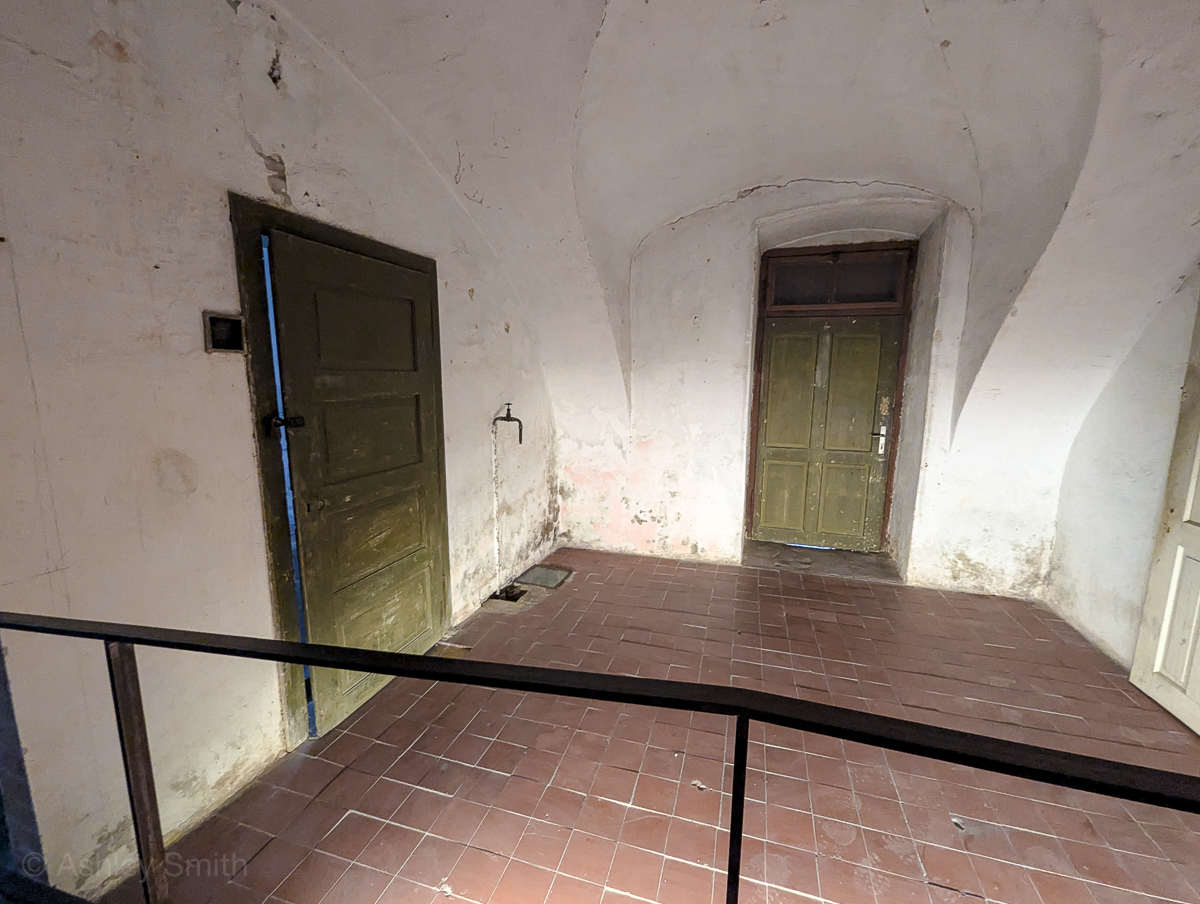
Hartheim after the war
The last gassing at Hartheim took place on December 11, 1944. Afterwards, they forced prisoners from Mauthausen to dismantle the killing facility and return the building to its original state in an effort to conceal the horrors that took place here.
After the war, the castle temporarily housed refugees and other displaced people but did not return to its previous role as a care center for those with disabilities. The first memorial was established here in 1969, but Hartheim Castle didn’t become a full-fledge memorial site until 2003 (better late than never though).
At the Nuremberg Trials, the Hartheim killing center’s two lead doctors–Viktor Brack and Karl Brandt–were both found guilty of war crimes, crimes against humanity, and membership in a criminal organization (the SS). They were executed by hanging in June 1948. Twenty other doctors associated with the T4 program were tried as well; a few were acquitted but all others were either executed or received lengthy prison sentences. Still, a small consolation.
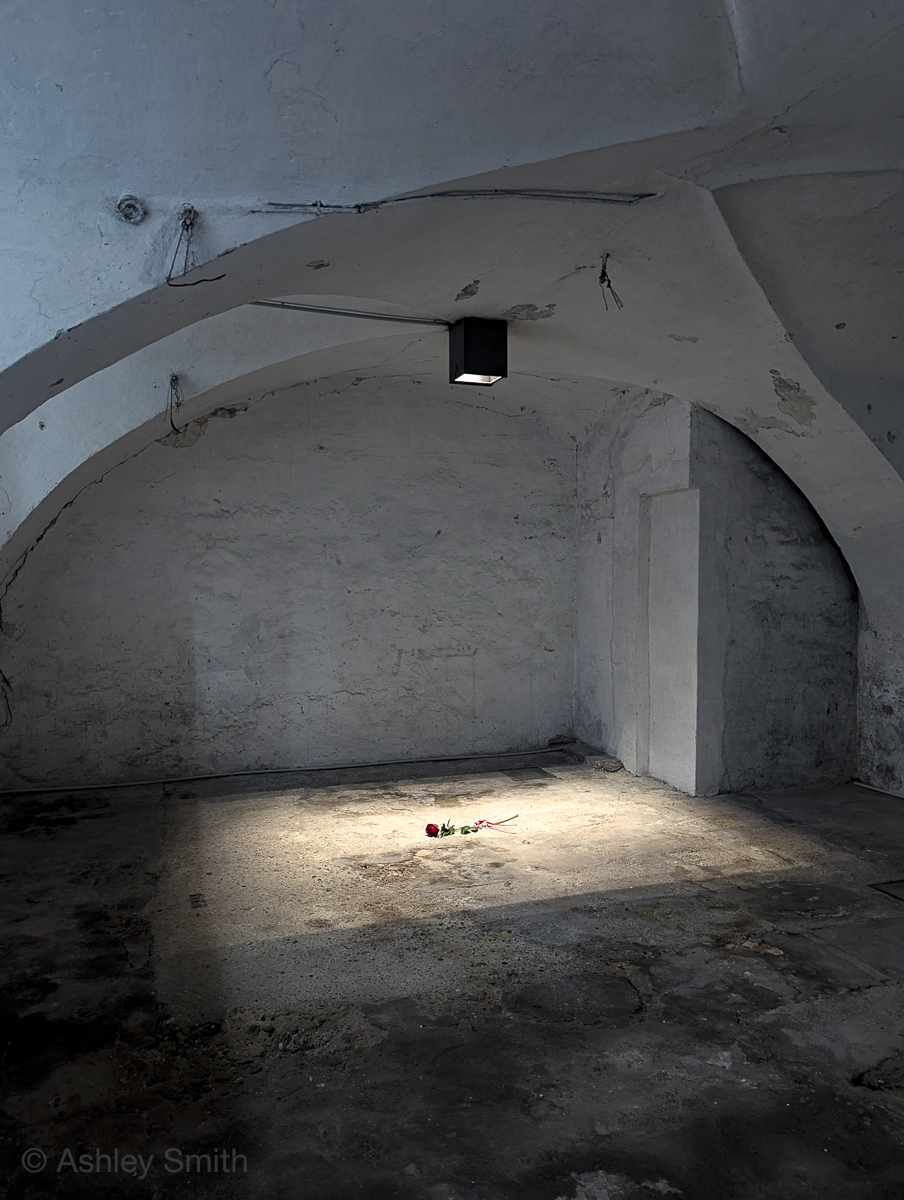
Where is Hartheim Castle?
Hartheim Castle Memorial Center is located in the town of Alkoven in north/central Austria. It’s about an hour from both the German and Czech borders and just a 20-minute drive west of Linz.
How to get to Hartheim Castle
Given Hartheim Castle’s somewhat rural location, getting here by car is going to be the fastest and easiest way to visit. When I visited Hartheim in June 2025, I drove from Linz where I was already staying for a few days. (Rent a car here if you need one.)
GPS address: Schloßstraße 1, Alkoven, Austria
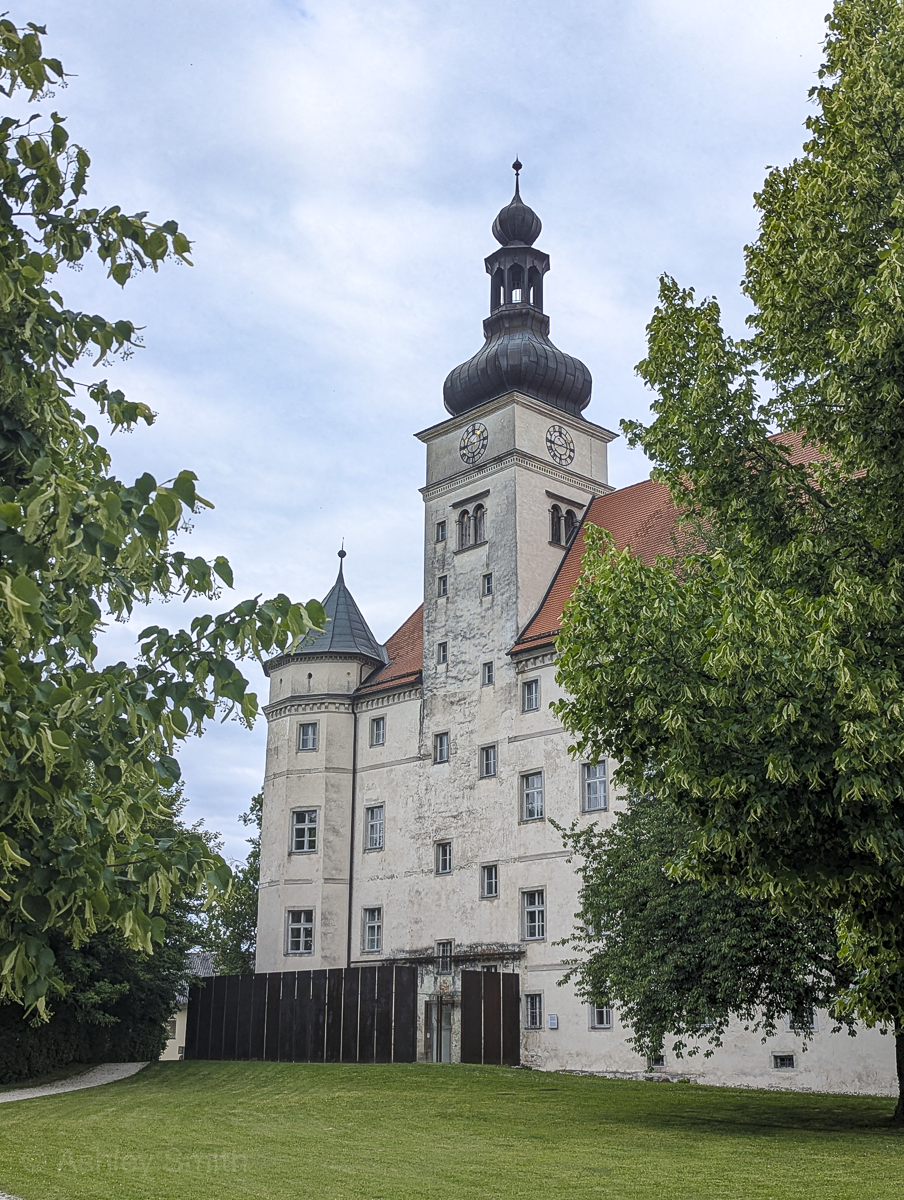
Where to park at Schloss Hartheim
Once here, there’s plenty of free parking outside the memorial site. Just follow the road to the castle and you’ll dead-end in the parking area.
Getting to Hartheim Castle by public transportation
If you don’t have your own rental car, you can still get here by train from Linz. From Linz Hauptbahnhof, take the Linzer Lokalbahn (line S5) to Alkoven. From here, it’s a 15-minute walk to Hartheim Castle.
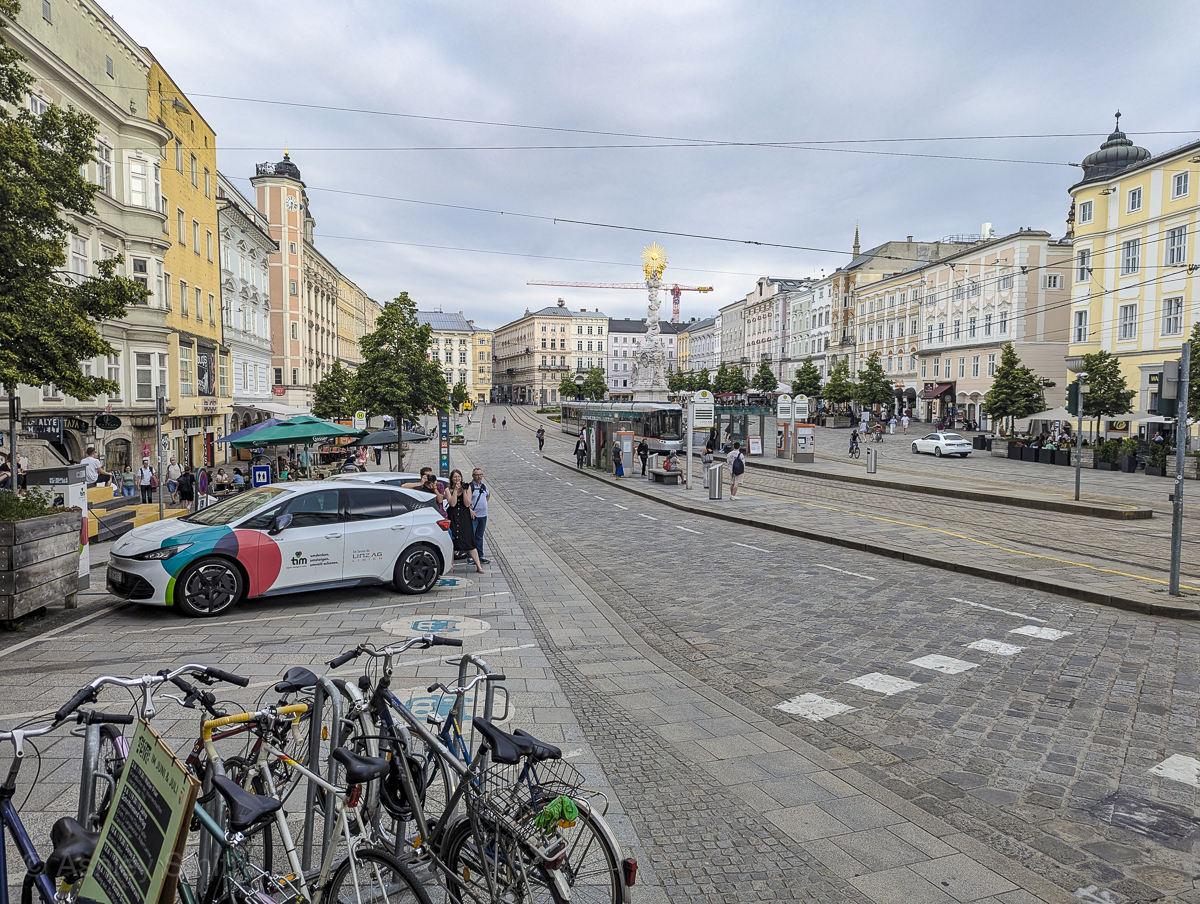
What to see at Hartheim Castle
Though the killing center was dismantled near the end of the war, the entire castle remains intact and there’s still a lot to see here. In addition to the historic building itself, you’ll also be able to explore the memorial’s permanent museum exhibition, the “Value of Life” exhibition, several rooms of the castle, tons of memorials, the original gas chamber, crematorium, burial grounds, and more.
Hartheim Castle Museum Exhibitions
There are two museum-style exhibitions at Hartheim Castle that you can explore:
- The Memorial: Hartheim Castle – Place of Learning and Remembrance
- “Value of Life”
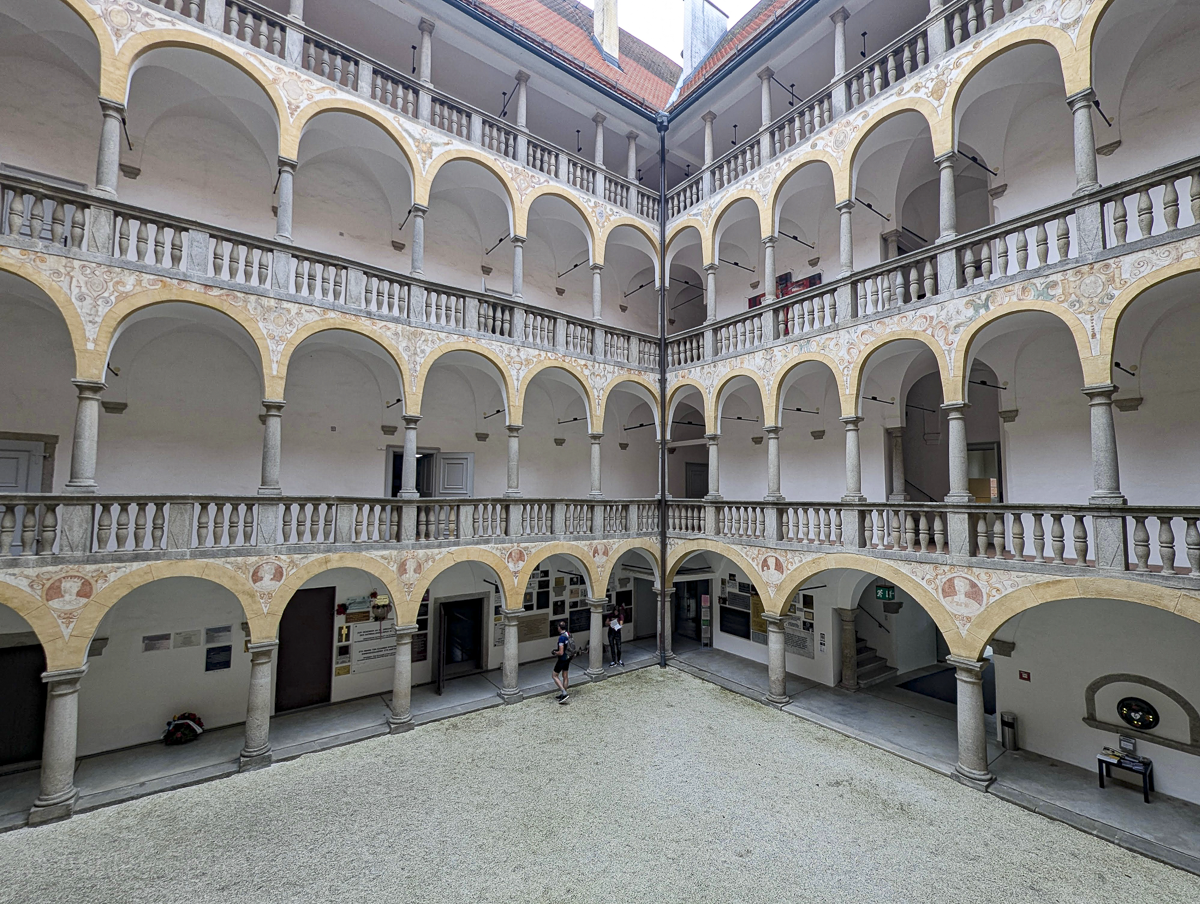
The Memorial EXHIBITION
On the ground floor you can explore the main permanent exhibition referred to as “The Memorial.” This exhibition spans several of the original documentation rooms and includes tons of information on topics like the Aktion T4 program and the Nazi euthanasia program in general, the perpetrators, some of the victims, the killing operations, and more.
This is also where you can visit the reception room (where prisoner “patients” arrived before being killed), the gas chamber, the crematorium and morgue, and the Room of Silence memorial.
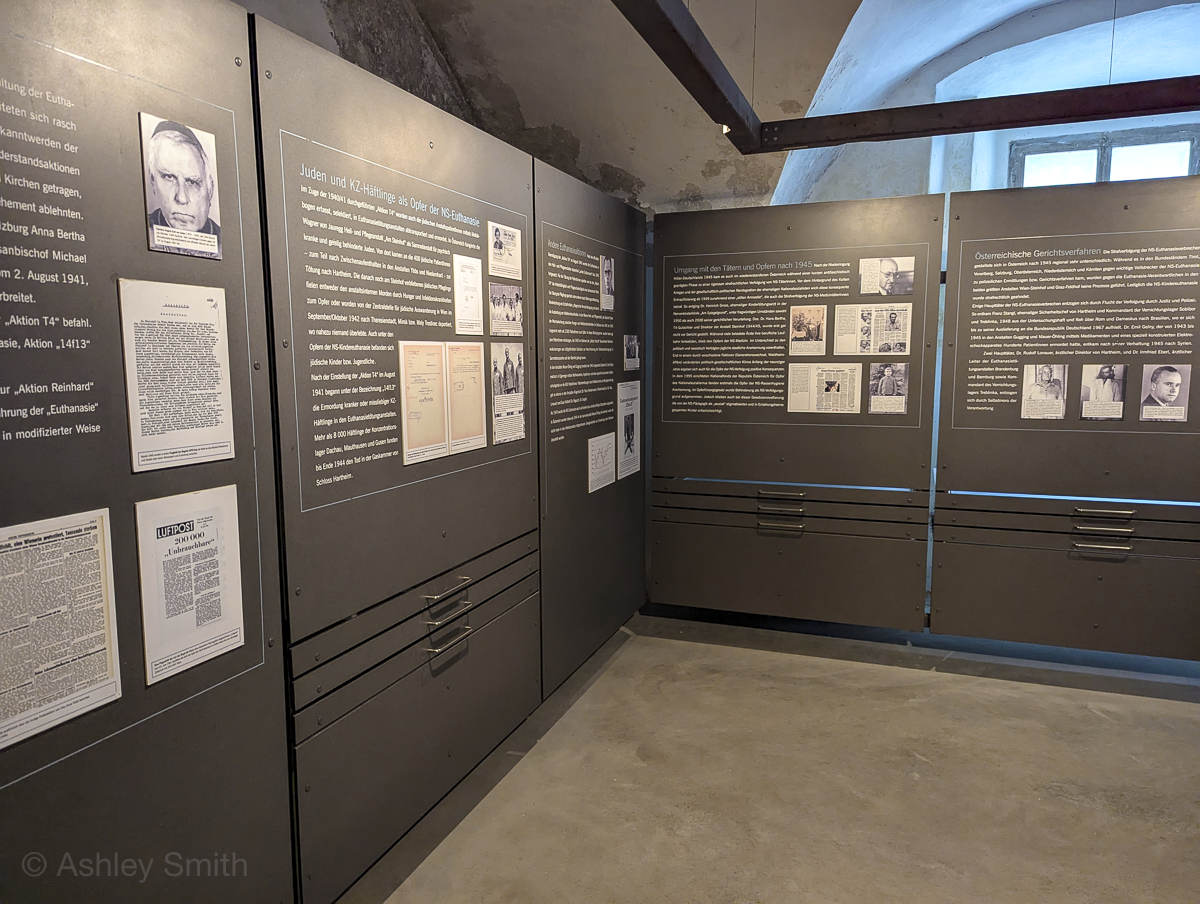
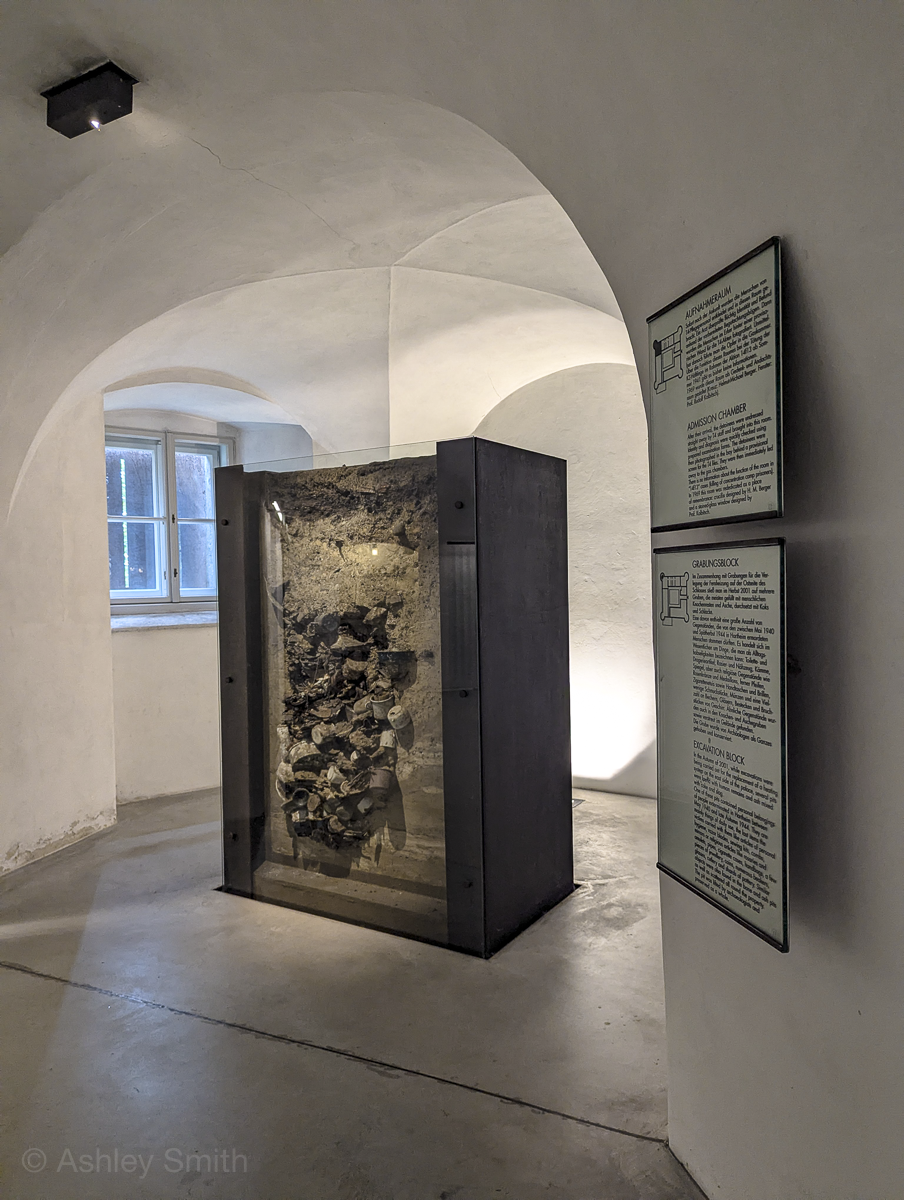
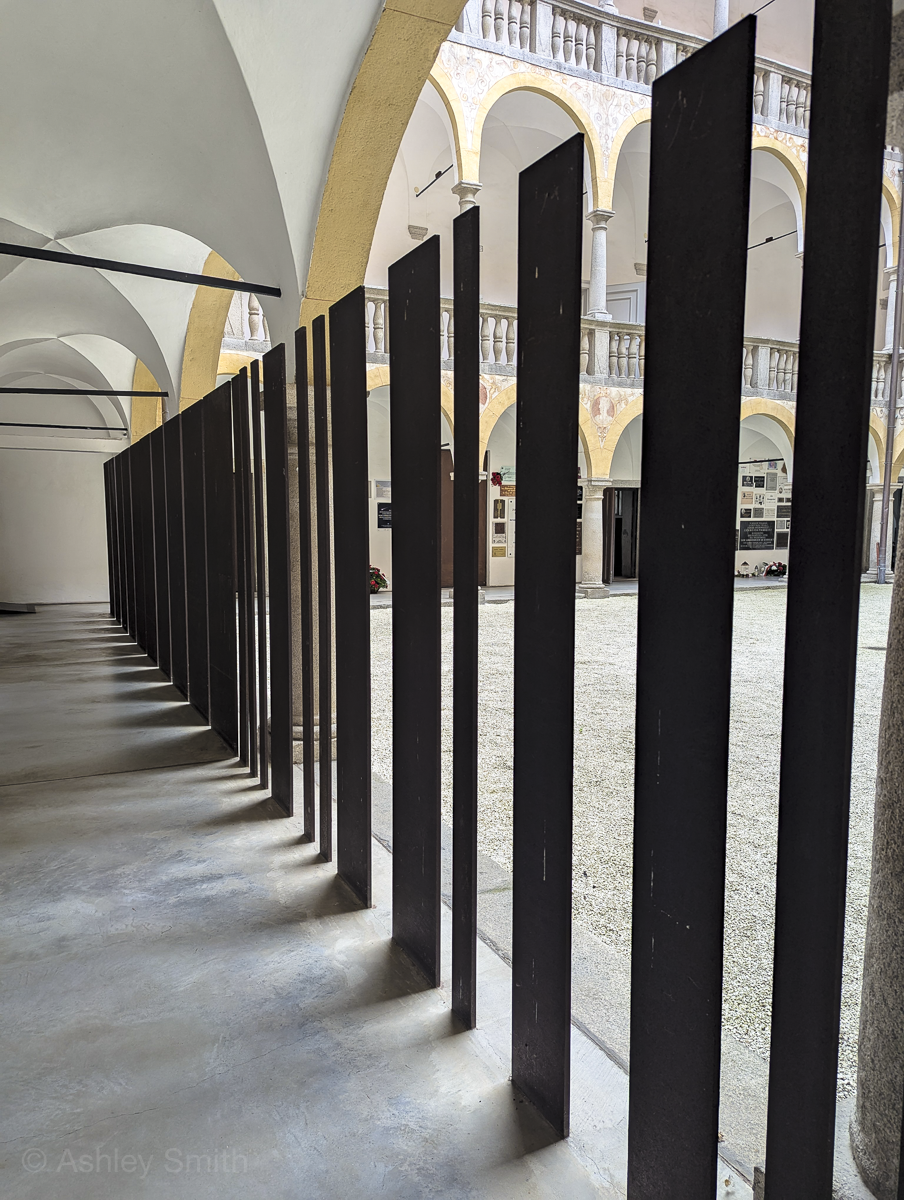
The Value of Life exhibition
This special exhibition originally opened in 2003 with the opening of the memorial center, but was completely redone in 2021. Now referred to as “Value of Life. Dealing with the ‘Useless,’” this exhibit focuses on society’s view of people who are/were considered “useless” because of their disability, health, or age.
This exhibit discusses topics concerning who gets to make these determinations and why, how societies and governments deal with these populations, all kinds of human rights issues, and so much more. It raises seriously thought-provoking questions and the information it provides is fascinating. Please do not miss this exhibit!
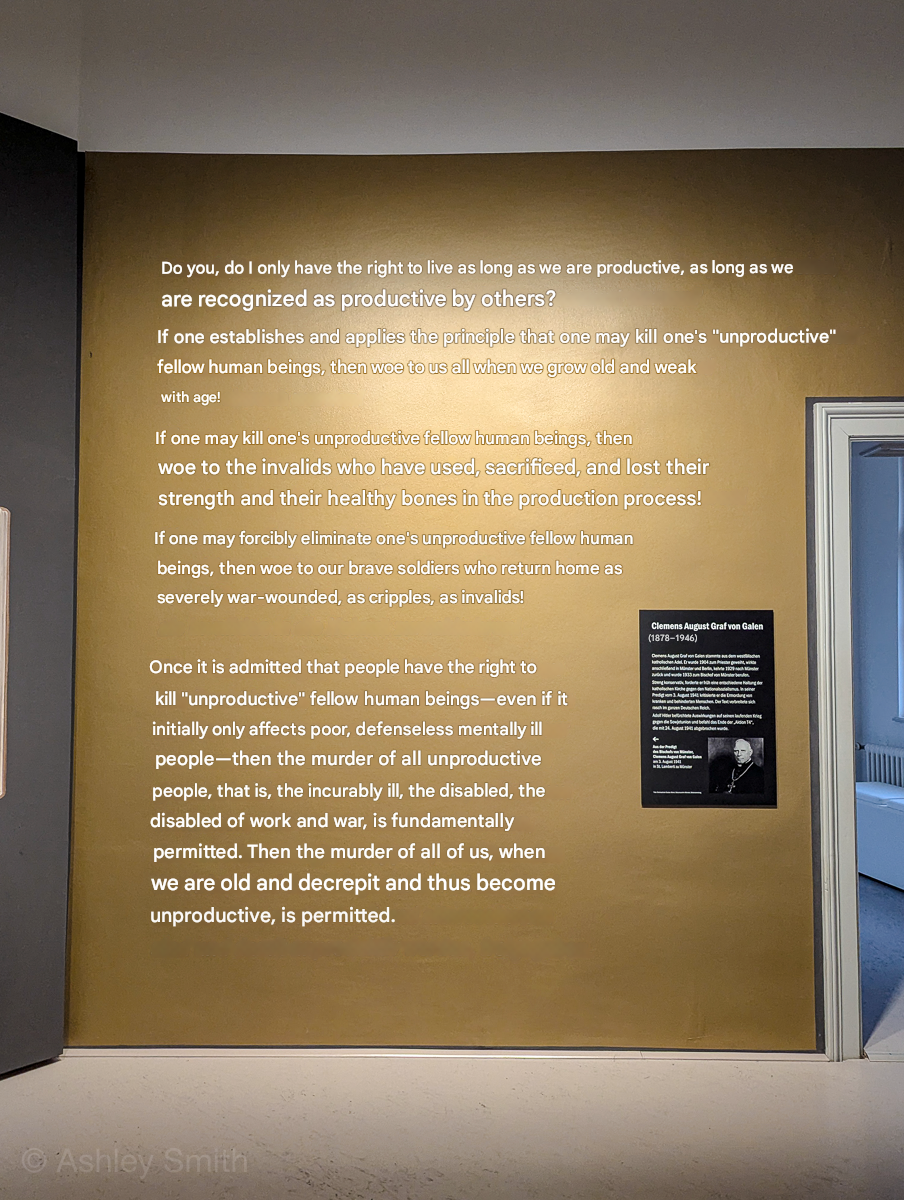
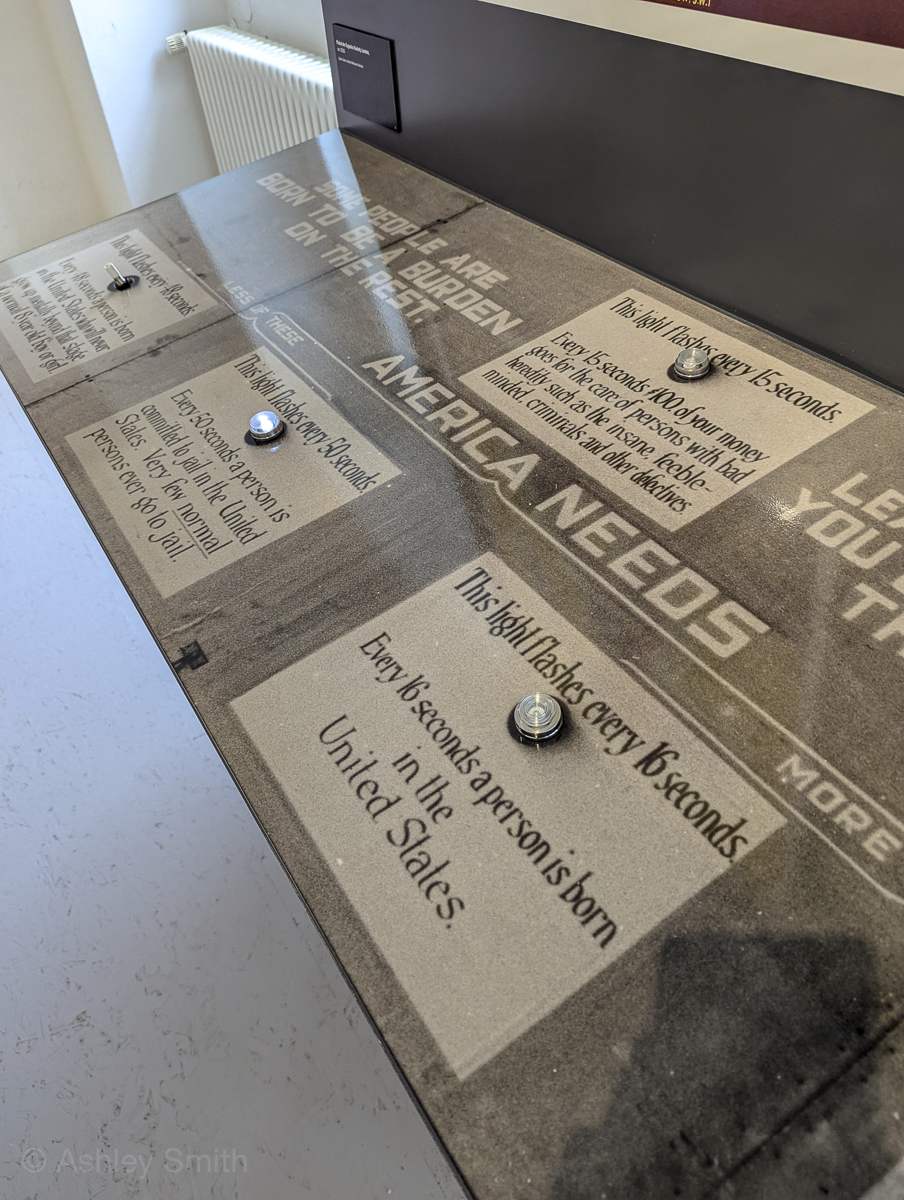
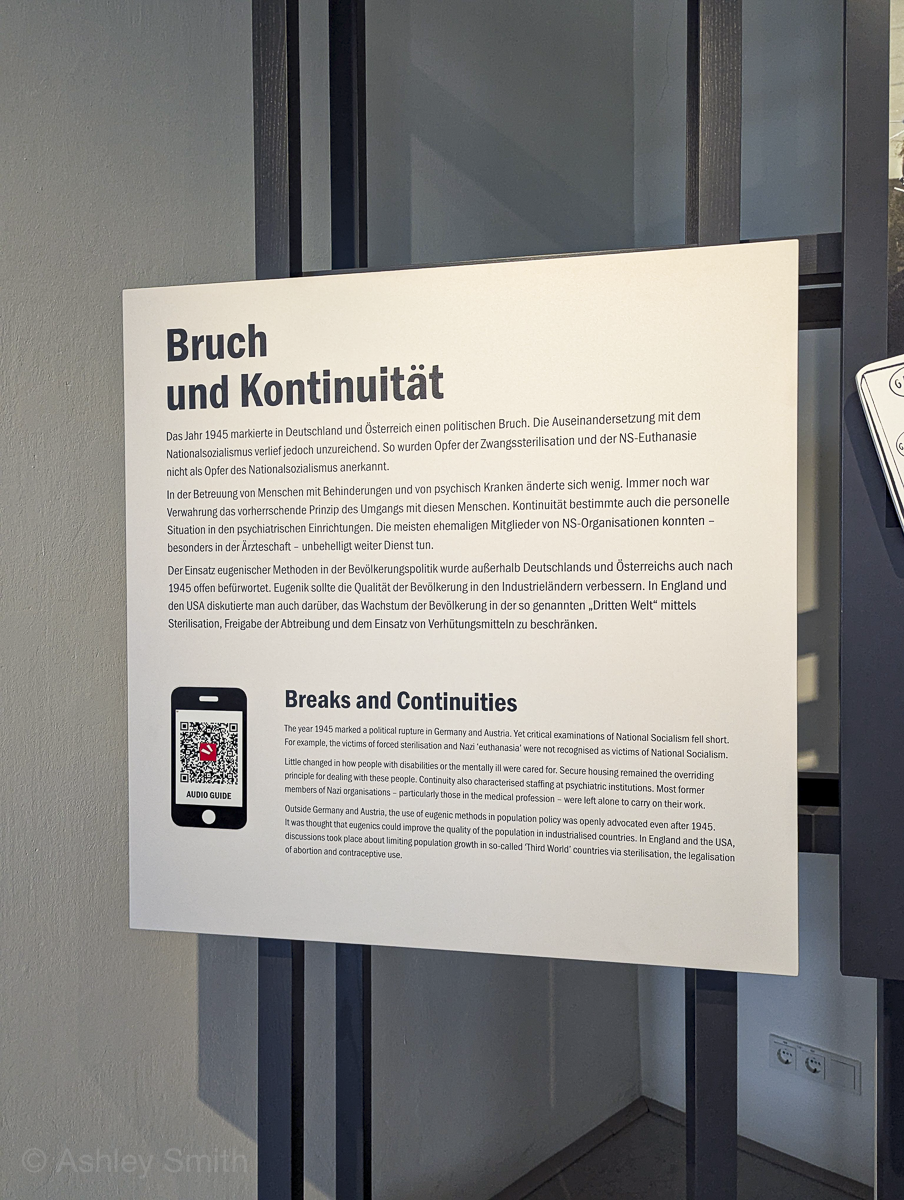
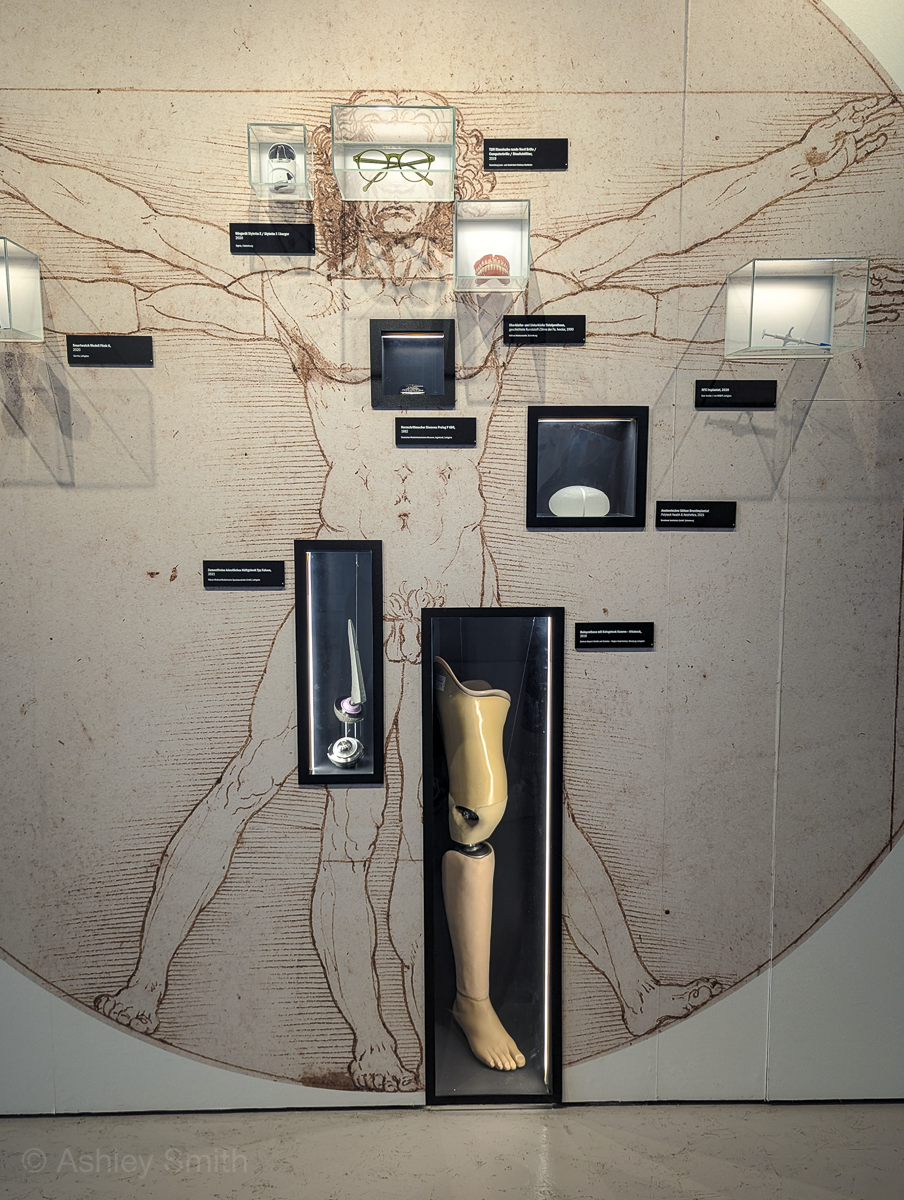
Hartheim Castle Memorials
Around the castle, you’ll be able to see several memorials and monuments:
- Under the porticos in the castle’s interior, victims’ relatives have installed memorial plaques, a practice which began in the 1950s. Today, these are added to the exterior castle wall as well.
- In the former reception room is the wall of names of all the known victims
- Behind the castle is now a cemetery where recently discovered (2002) victims’ ashes and other remains were officially reburied
- On the left side of the castle is a memorial space at the site of the former garage, where the buses loaded with victims entered.
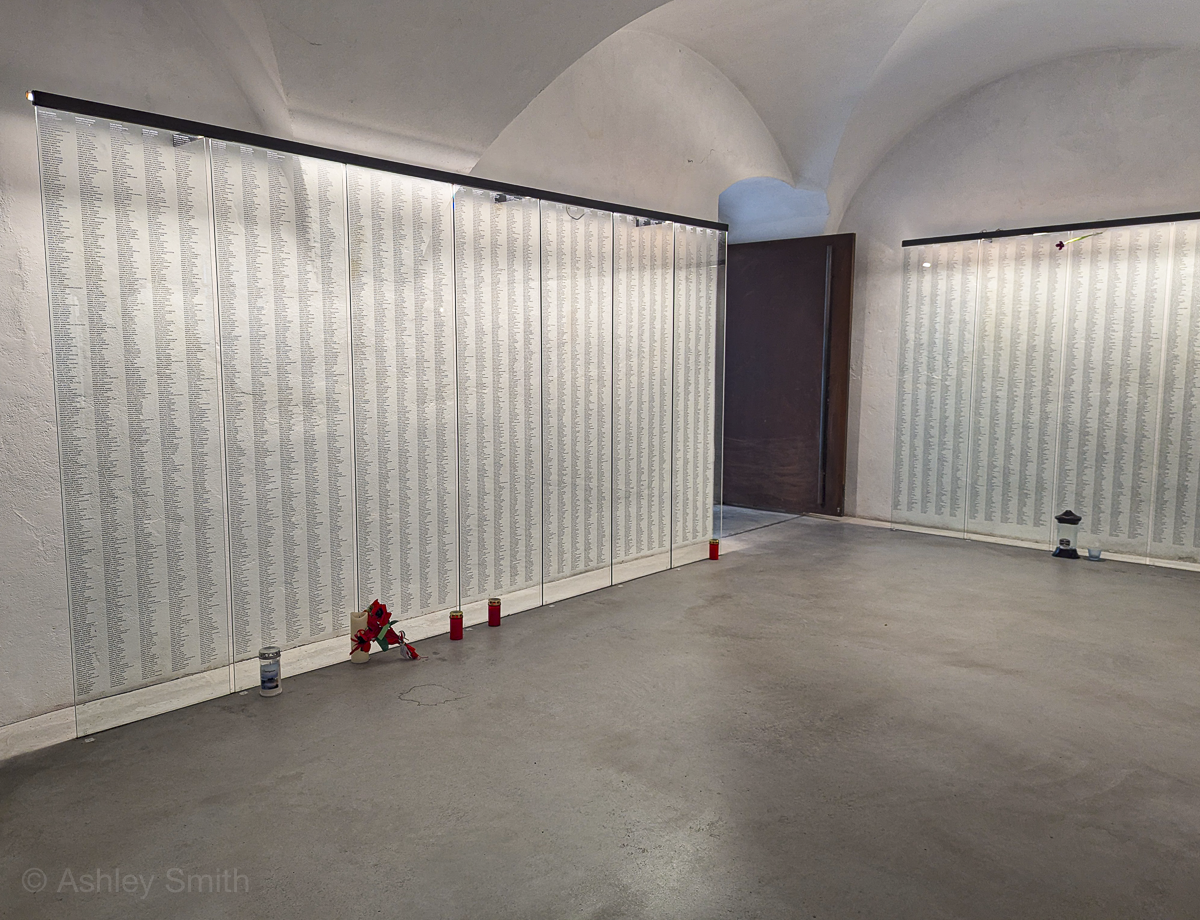
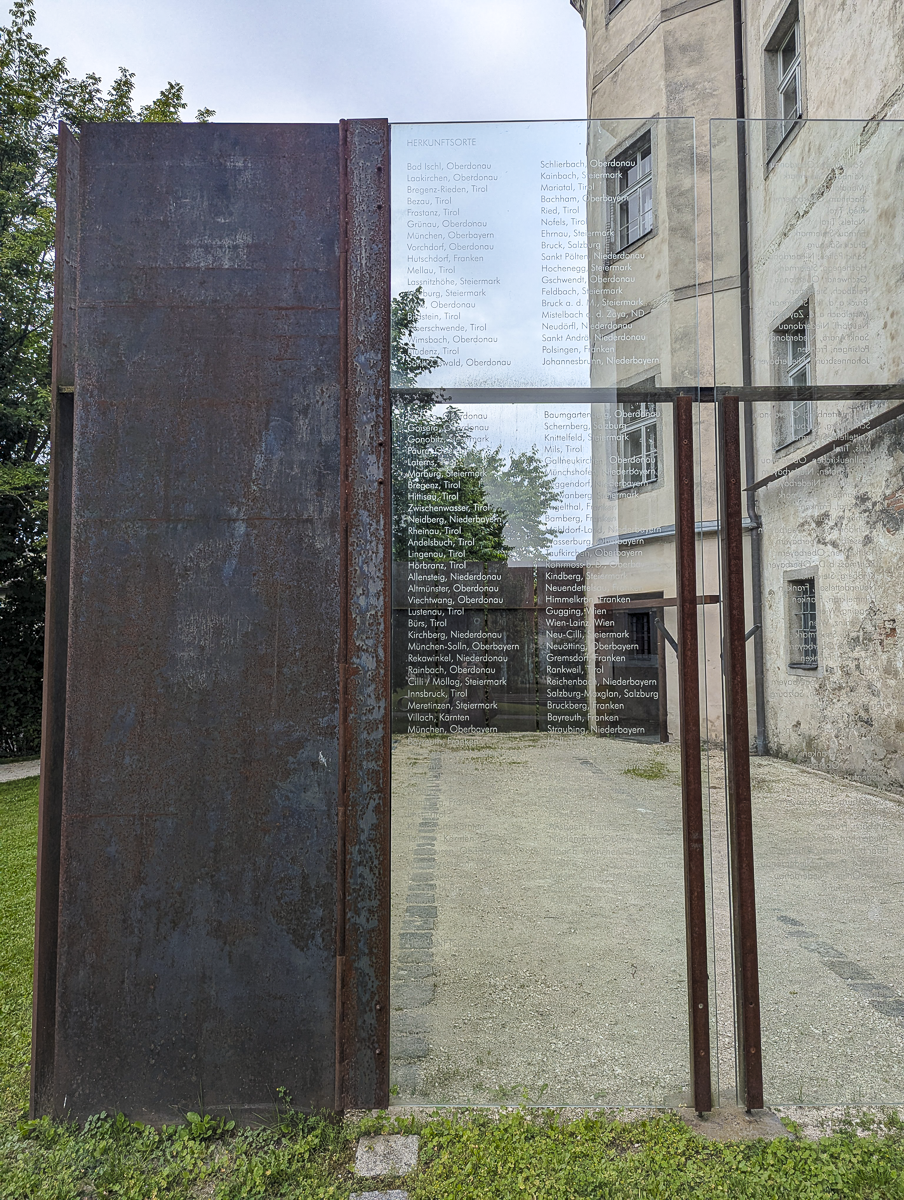
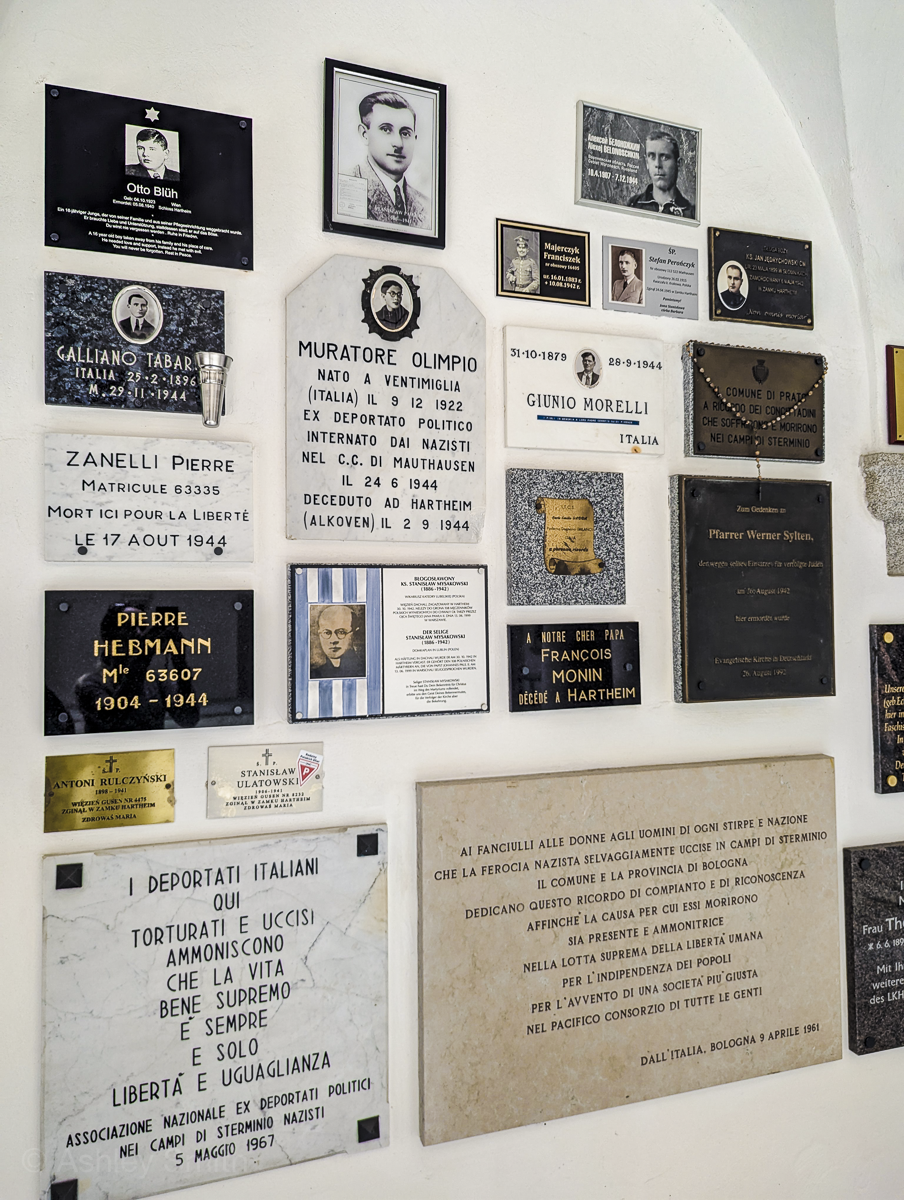
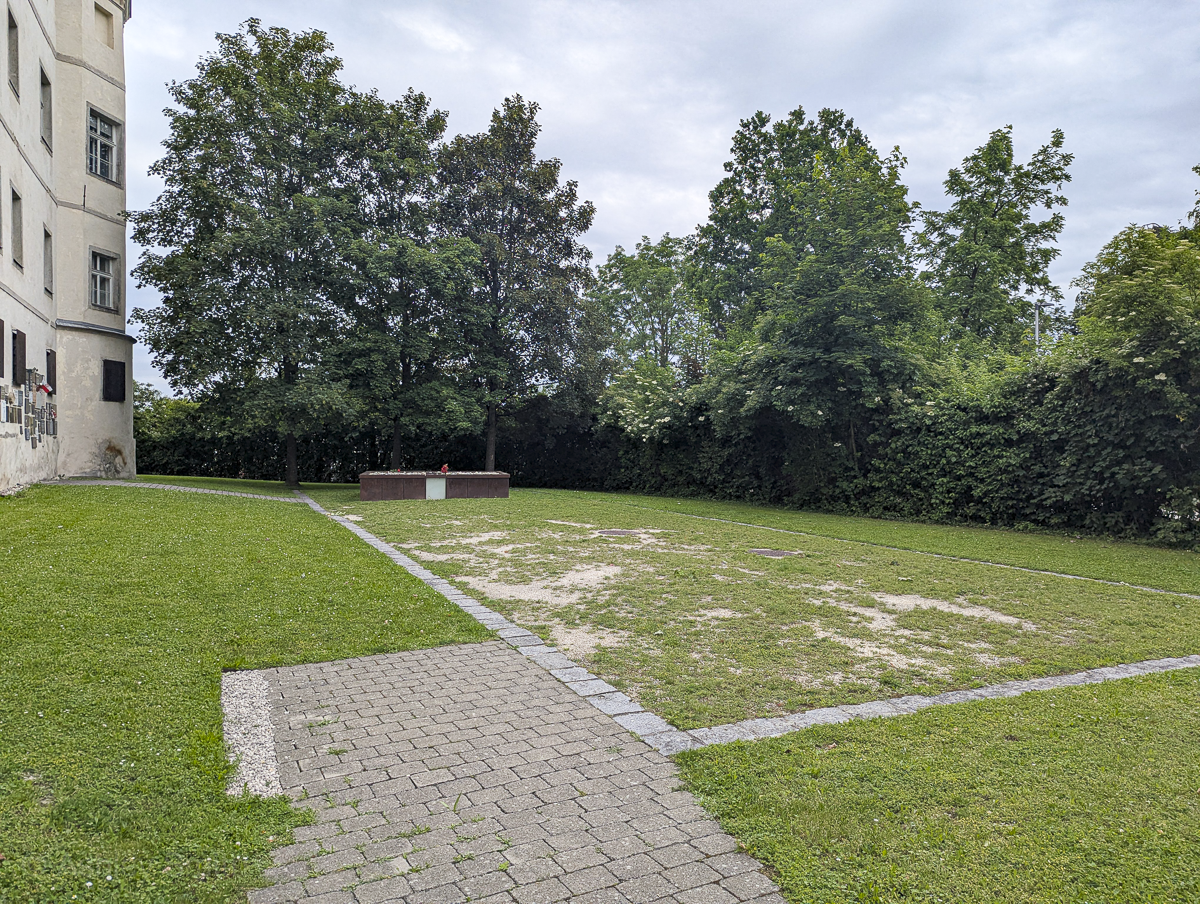
Visiting Hartheim Castle: What to expect
Upon arriving, first stop by the Visitor Center just inside the castle’s entrance. This is where you’ll pay the small entrance fee and can pick up a map of the property. You’ll also be able to find related published materials here.
From here, head upstairs and start your visit at the Value of Life exhibition. Afterwards, head back to the ground floor to explore the museum exhibition, original killing center rooms, and memorial spaces. Finally, head outside to visit the cemetery and other monuments. (You’re free to roam the property on your own, this is just the order I would personally suggest.)
For a complete visit of all the sites here, expect to spend between 1.5 – 2 hours.
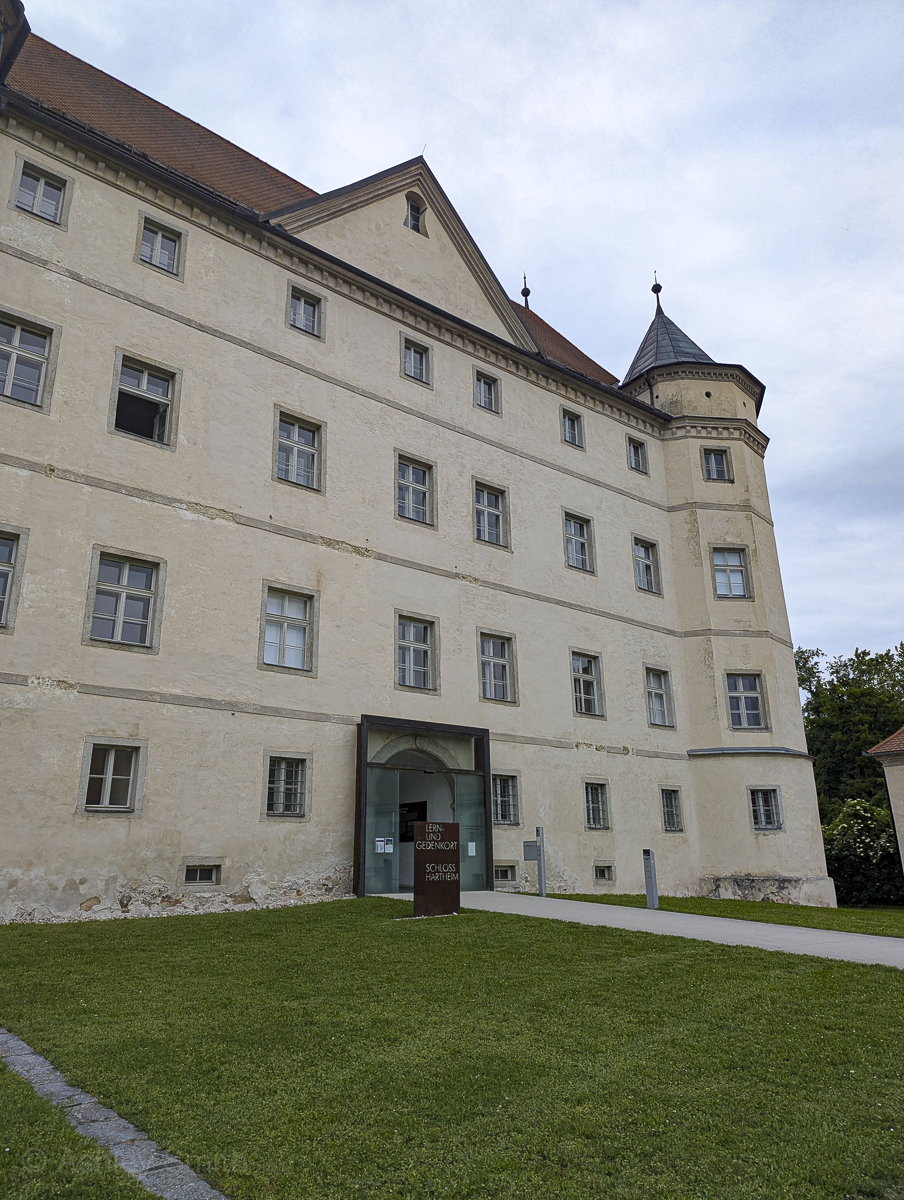
What you need to know for visiting Hartheim Castle
Visiting Hartheim Castle is pretty straightforward, but here are a few things you should know before you go:
Visiting Hartheim Castle is free, sort of
There’s no charge to visit the castle, the documentation rooms and permanent exhibition, the gas chamber, crematorium, memorial grounds, etc. However, visiting the “Value of Life” exhibition costs €5 per person. Please do not let that dissuade you from seeing it; it’s worth it. Regardless, there are no tickets to buy or reservations required.
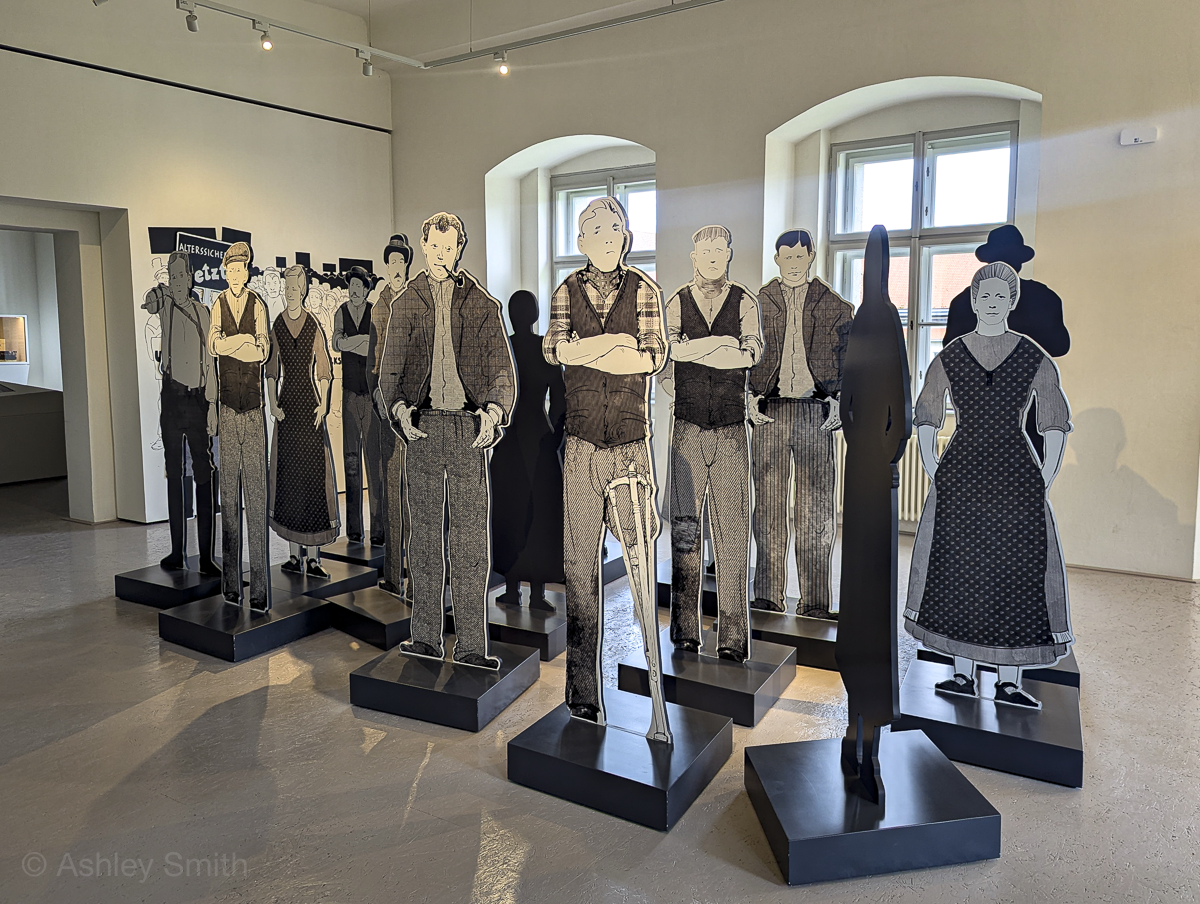
Utilize the virtual Hartheim guide for translation
Only some of the exhibits are in English, but the Hartheim memorial provides a free, easy-to-use virtual guide so you can read all the exhibits. You’ll see sheets with QR codes sprinkled throughout the castle, or you can simply go to this page to scan them.
A webpage will open on your phone (no need to download an app). Click the flag icon at the bottom left and choose English. Note that there are separate QR codes for the memorial exhibition and the Value of Life exhibition.
Children not recommended
The recommended minimum age for visiting the memorial exhibition is 14 and 10 for the Value of Life exhibition.
When you get hungry/thirsty, stop by Café Lebenswert next to the castle for snacks and light refreshments. This café is run by the Hartheim Institute which provides employment opportunities for people with disabilities. You can view the menu here.
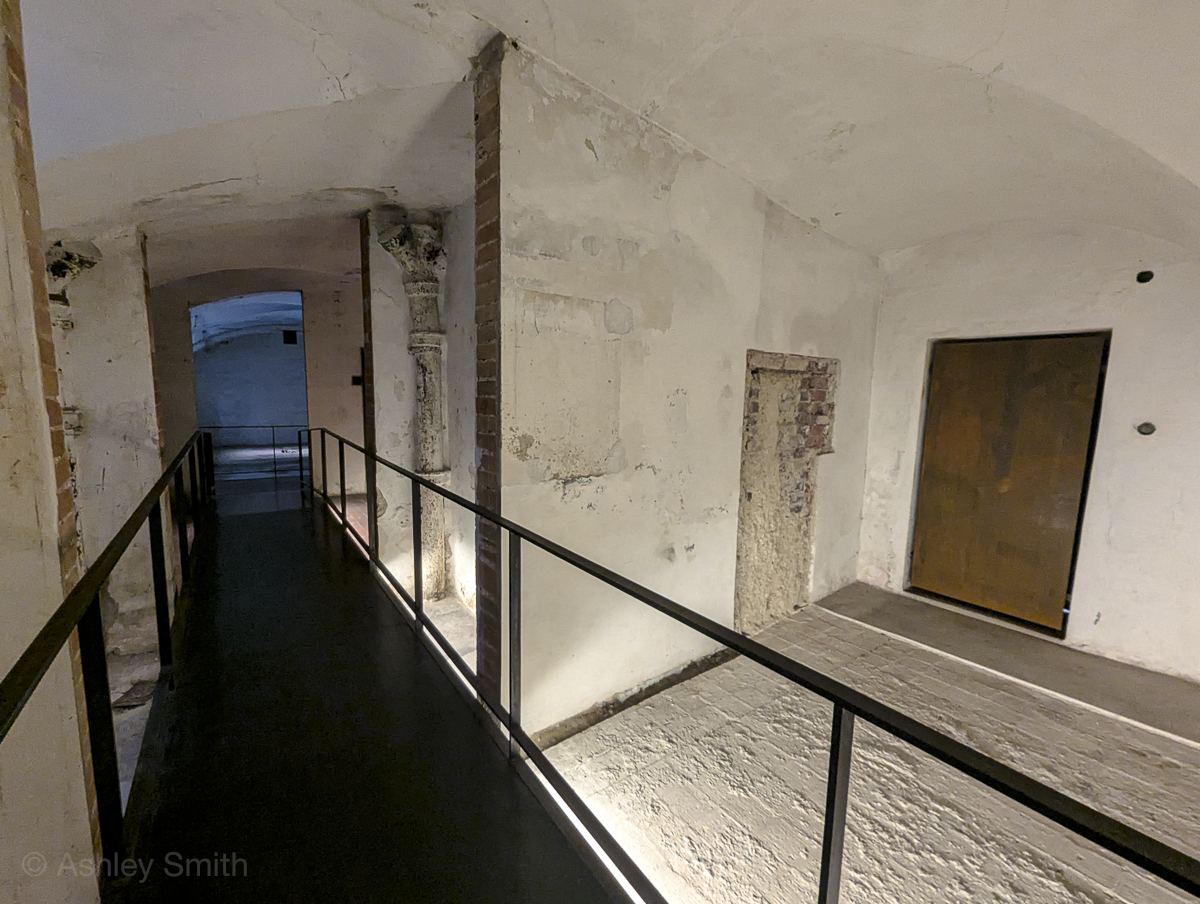
Visiting Hartheim Castle: Essential information
Here’s the most basic information you need to plan your trip to Hartheim Castle:
Accessibility at Schloss Hartheim
All parts of the castle are “Barrier-free” and they offer accommodations for blind and deaf visitors in the exhibitions as well. For more information on accessibility at Hartheim Castle, see this page.
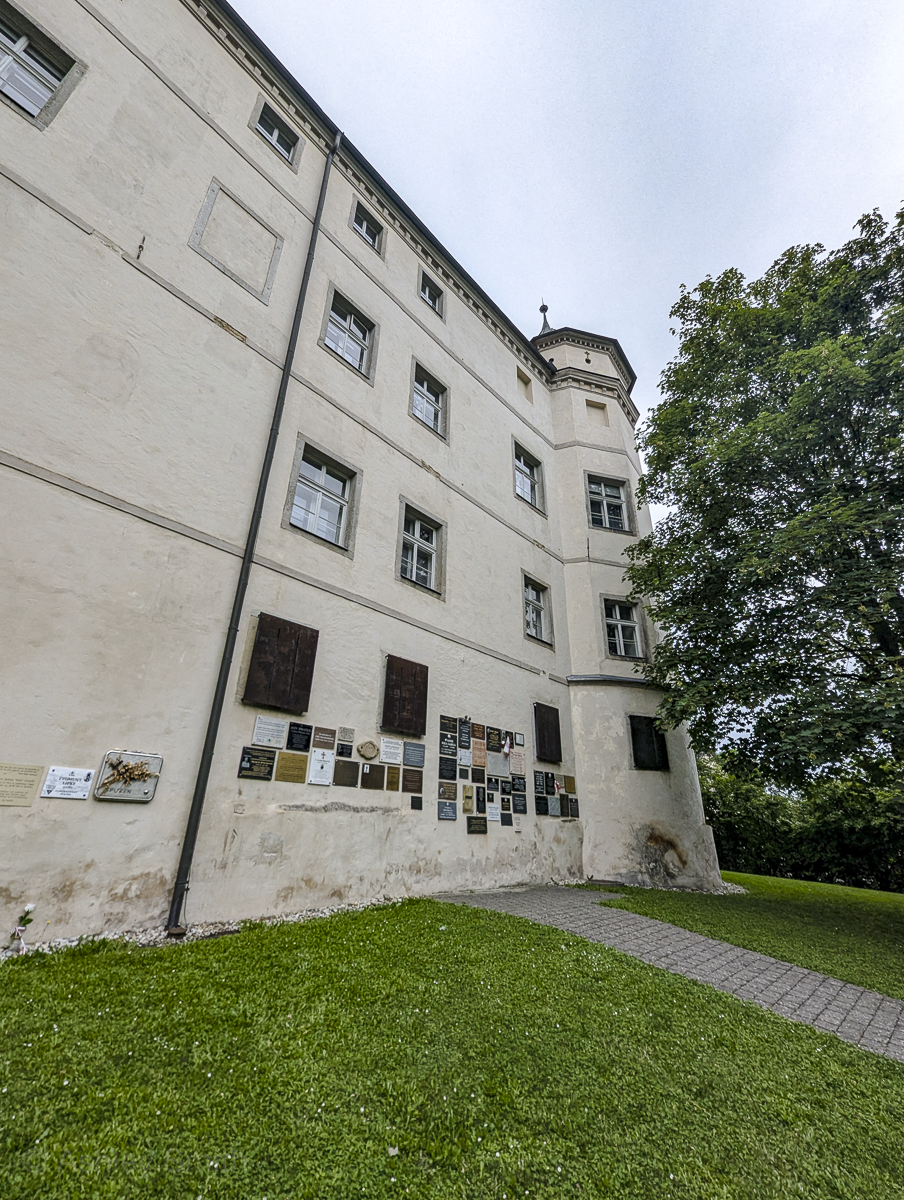
Books & movies about Hartheim Castle
Here are a few great books (and one documentary film) to prepare you for visiting Hartheim Castle (or supplementing your knowledge of it afterwards).
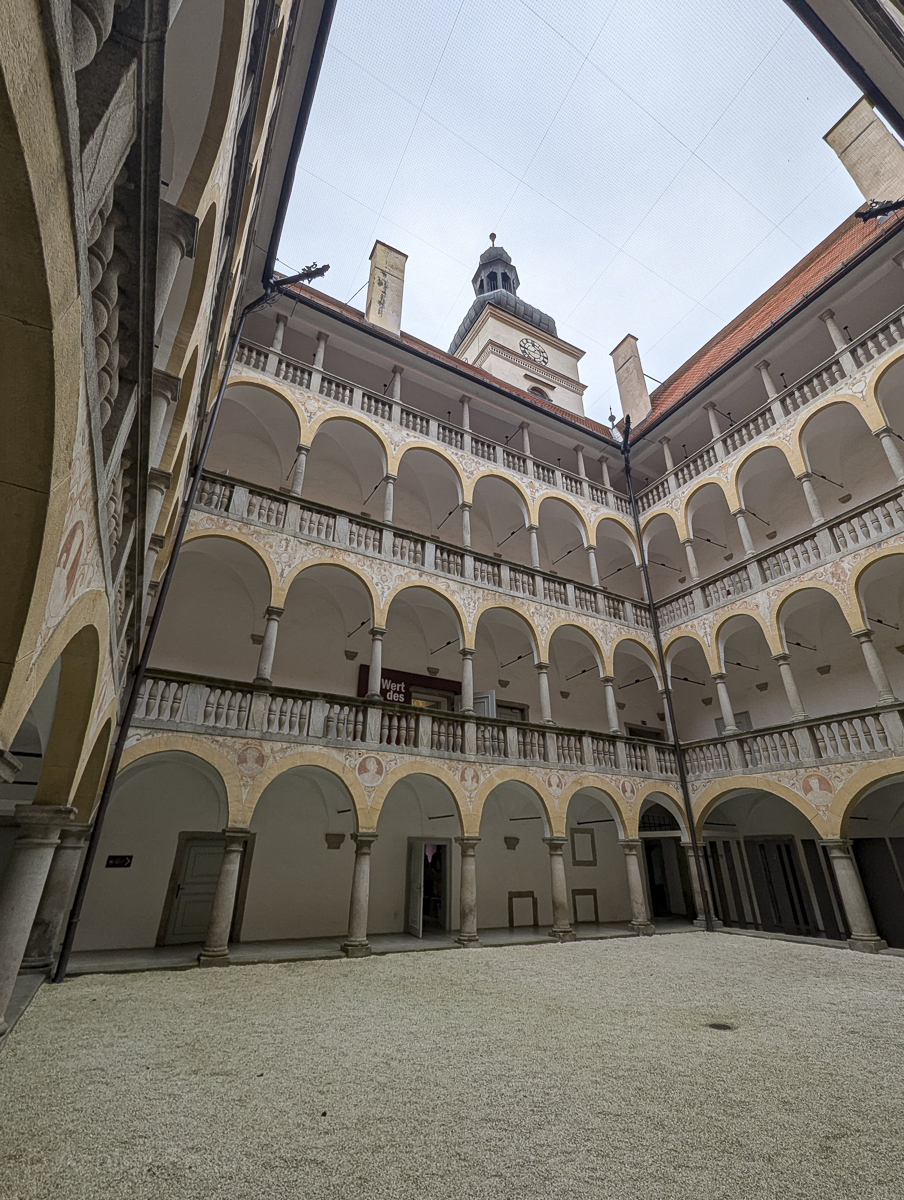
Where to stay for visiting Hartheim Castle
Linz is going to be the best place to stay for visiting Hartheim Castle. It’s a (small) major city with plenty of things to do, places to eat, shops and markets, and more. Here are a few quick hotel suggestions:
You can see all available Linz hotels here.
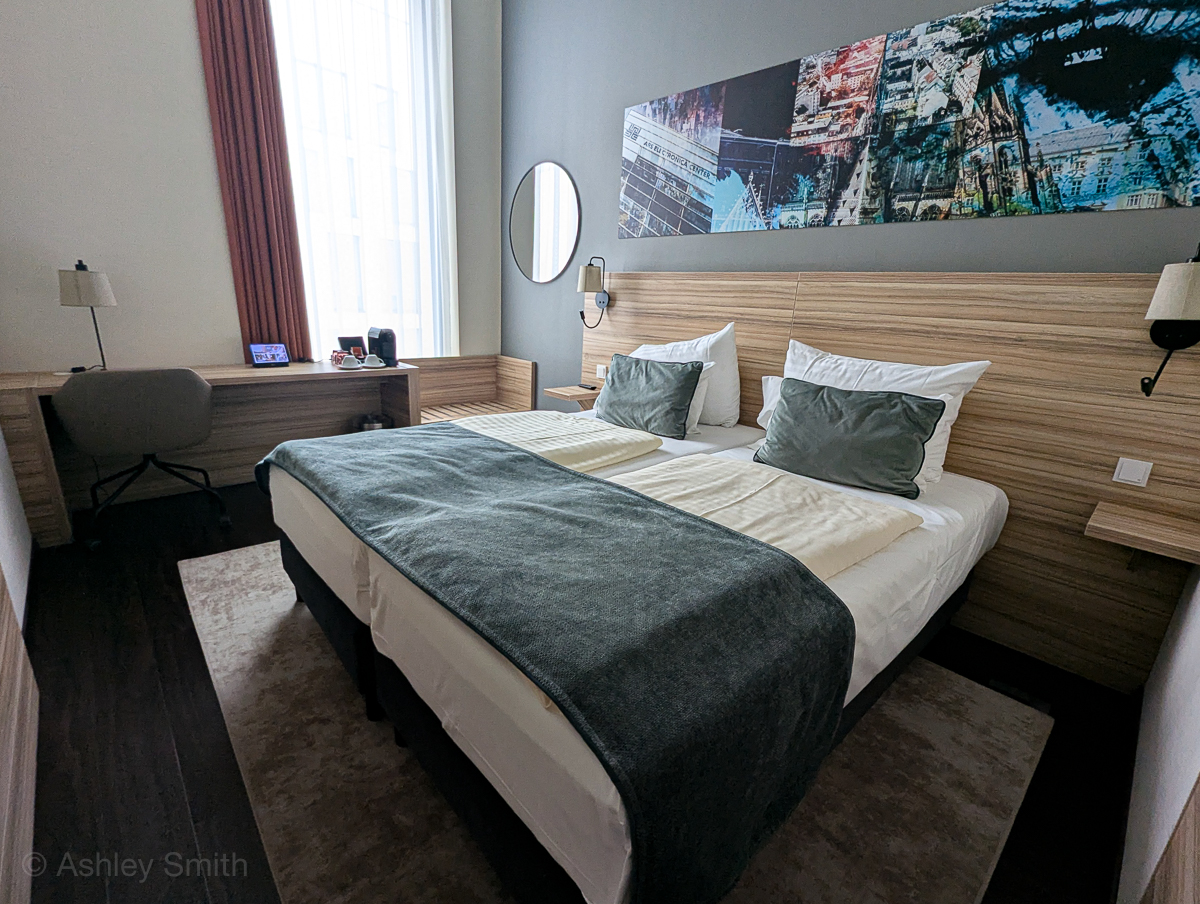
More info for your trip to Austria
- Hotels: Find great places to stay on Booking.com (my go-to). Expedia and Hotels.com are worth checking too. VRBO is best for apartment rentals.
- Rental cars: Check out the best rental car deals here.
- Local tours & activities: Check out all the great local options from Viator and Get Your Guide here.
- Don’t forget an Austria guidebook and this must-have Austria customs and culture guide!
- Want more? See all my Austria posts here.
Like this post? Have questions about visiting Hartheim Castle? Let me know in the comments below. Thanks for reading.

Save this info, pin this image:
